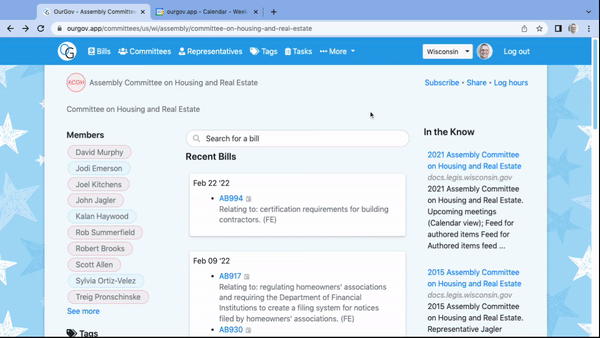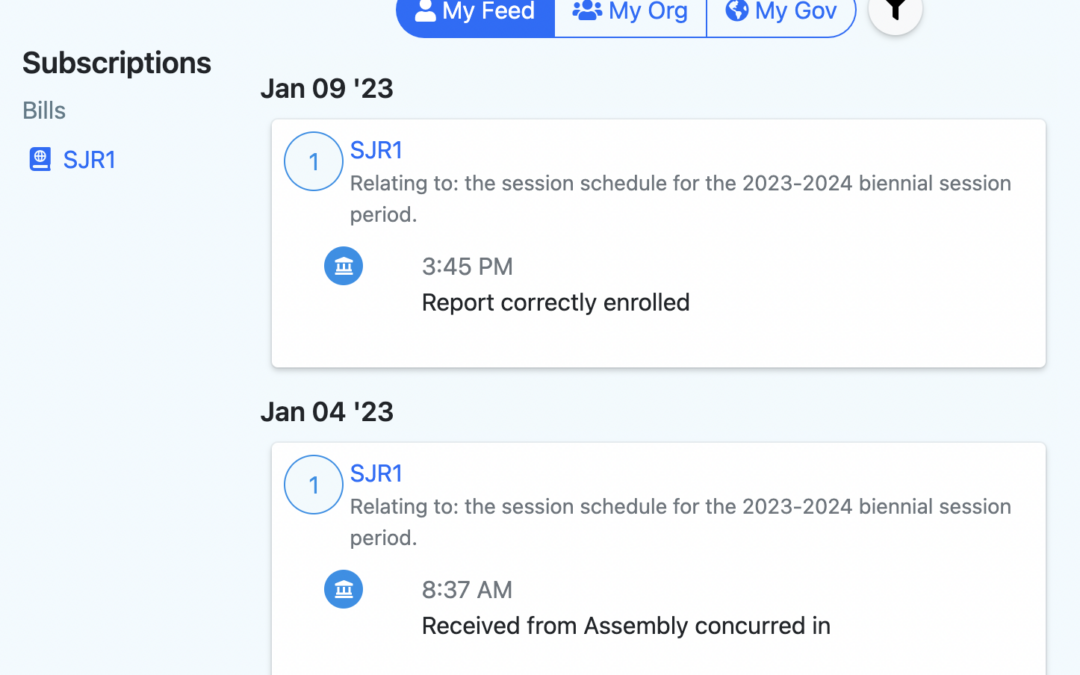On January 9th the Wisconsin State Senate enrolled Senate Joint Resolution 1 (SJR1), defining the legislative session schedule for the 2023-24 biennium.
There are a number of important dates for all policy advocates to keep in mind, which are outlined below.
But for those who may be unfamiliar, just what exactly is a ‘biennium’ and how does it work in the legislative process?
The biennium at a glance
The Wisconsin State Legislature operates on a biennial schedule, meaning that the legislative session occurs every two years. The current biennium began on January 3, 2023 and will conclude on December 31, 2024.
During this two-year period, the Wisconsin State Assembly and Senate meet regularly to consider and pass legislation. The regular session begins on the first Tuesday in January and lasts for a maximum of four months. The legislature can go into an extraordinary session, called by either the Governor or a two-thirds vote of both the Assembly and Senate.
One of the major events during the legislative biennium is the State of the State address, given by the Governor at the beginning of the regular session. This address lays out the Governor’s agenda and priorities for the upcoming legislative session. The 2023 State of the State Address is set to take place Jan. 24 at 7 p.m. at the Wisconsin State Capitol, according to officials.
The legislative biennium schedule allows for a focused and efficient process for considering and passing legislation. It also allows for regular oversight of the state’s government and its policies.
The legislative process at a glance
The legislative process in Wisconsin begins with the introduction of a bill, which is then referred to a committee for review. The committee may hold public hearings and make changes to the bill before it is voted on by the full assembly or senate.
If the bill is passed by one chamber, it then goes to the other chamber for consideration. If it is passed by both chambers, it is sent to the Governor for signature. If the Governor signs the bill, it becomes law. If the Governor vetoes the bill, the legislature can override the veto with a two-thirds vote in both chambers.
Key dates for the 2023-24 biennium
Full details about the schedule can be found here. But here are a few key dates to keep in mind:
Bills are sent to the Governor on:
You can subscribe to this calendar here.
May 4th, 2023
August 3rd, 2023
November 30th, 2023
April 4th, 2024
April 25th, 2024
June 5th, 2024
Floorperiods
For the most part, the schedule consists of one floorperiod per month. These generally are between 3-10 days long, except for June when it runs for most of the month.
The session takes some time off for the summer and holidays, as no floorperiods are scheduled for the months of July, August and December.
The full list of floorperiods and dates can be found at the SJR1 page.
SLAE Filings
All registered lobbyists are required to file a Statement of Lobbying Activities and Expenditures (SLAE) every six months. These reports consist of extensive information regarding the time and money spent over that span.
The reports for July-December activities are due January 31st, and the reports for January-June activities are due July 31st.
Looking for a way to keep track of it all this session?
OurGov offers a seamless way to track the bills and dates you care about this session. We’ll even populate public hearings automatically to your calendar.

